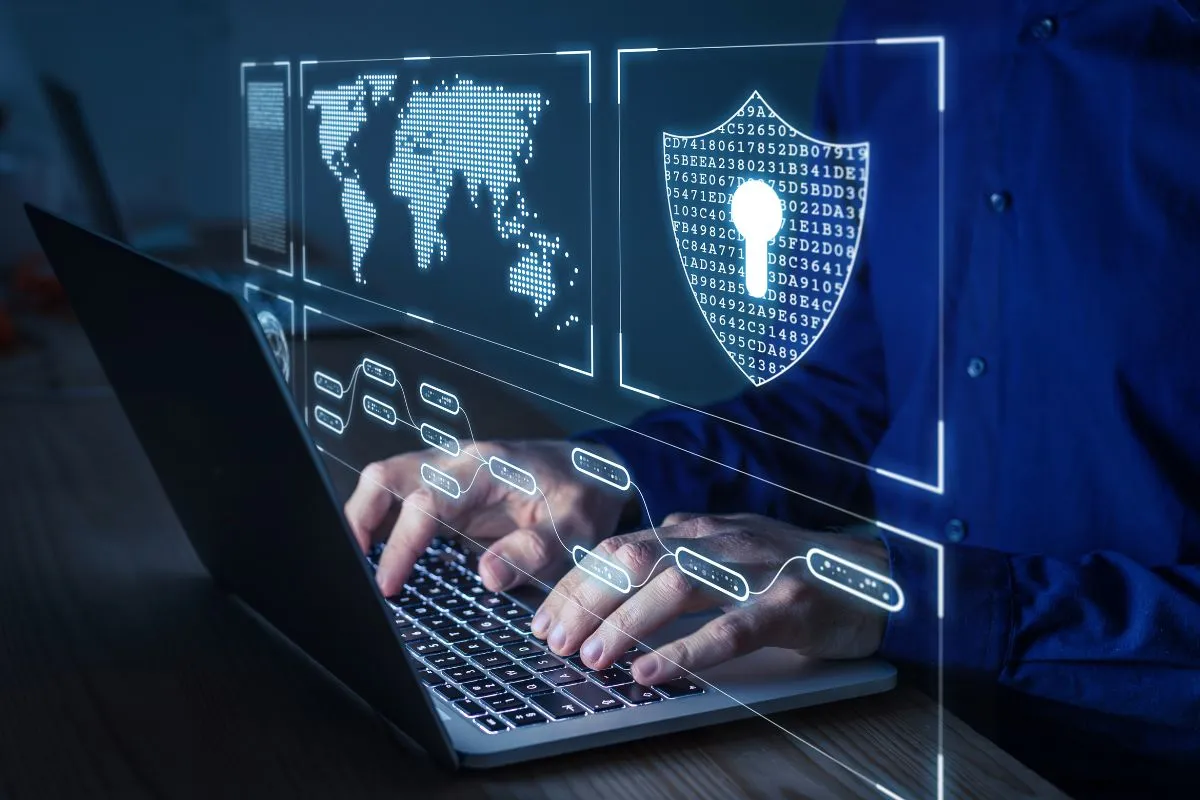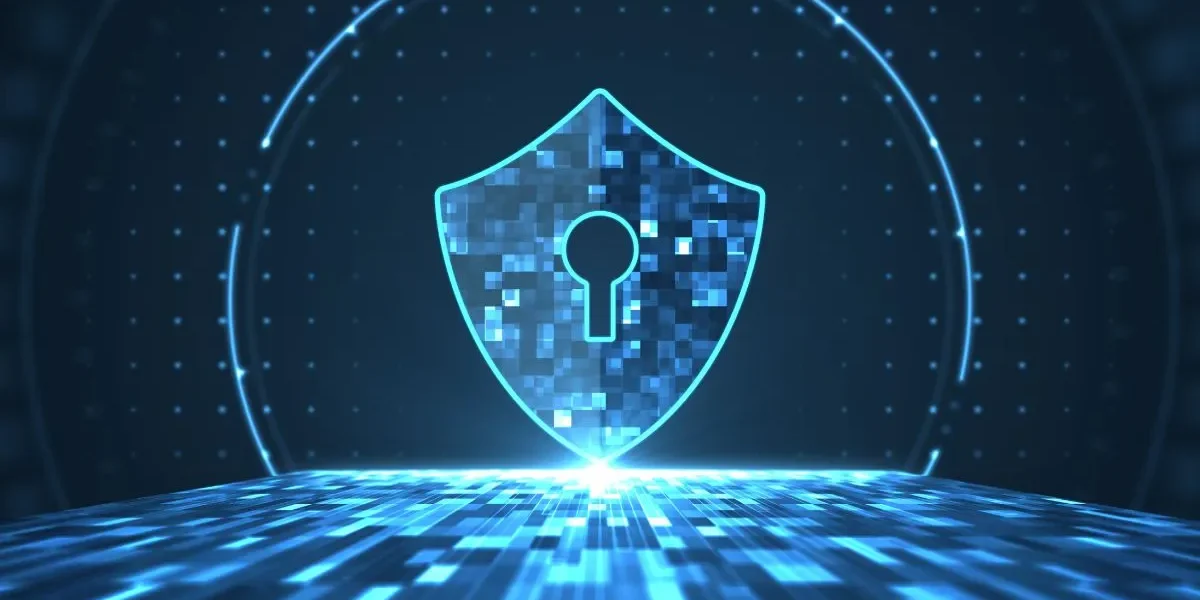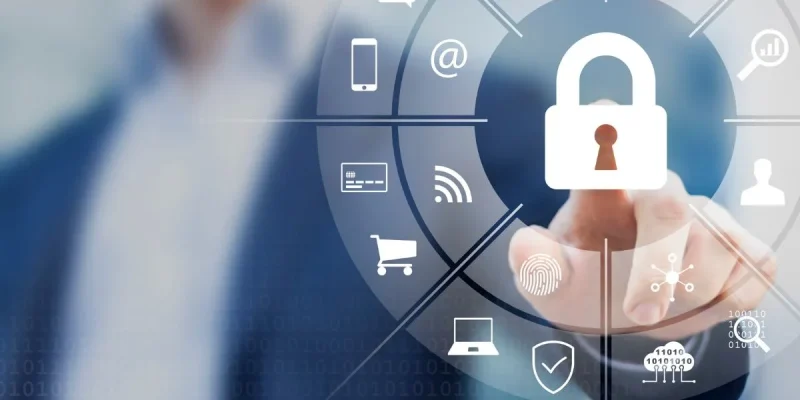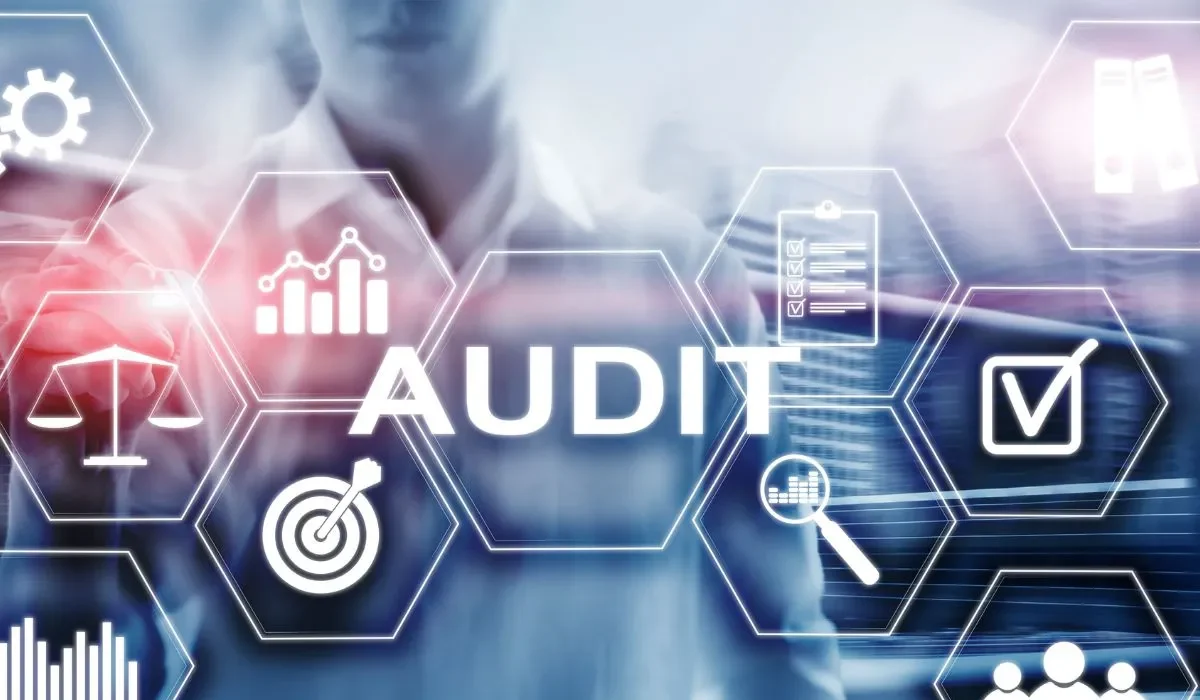Why Choose Us for Cyber Security?

Proactive Threat Management
Employs a proactive approach to identify and mitigate potential threats before they impact your operations. Our monitoring ensures real-time threat detection and response.
Expert Security Team
Our team comprises seasoned cybersecurity professionals with a wealth of experience in threat intelligence, incident response, and security best practices. Rest easy knowing your security is in the hands of experts.
Cutting-Edge Technology
Leveraging the latest in cybersecurity technology, we deploy advanced tools and methodologies to stay ahead of emerging threats and provide you with state-of-the-art protection.
Tailored Security Solutions
Recognizing that every organization is unique, our MSS solutions are tailored to meet your specific security needs and compliance requirements. We work closely with you to develop a customized security strategy.

Corporate Trainings – Offline and Online

Corporate Information Technology (IT) training refers to the educational programs and initiatives designed to enhance the kills, knowledge, and capabilities of employees within an organization in the field of information technology.
These training programs cover a wide range of IT-related topics, from basic computer skills to advanced technologies and specialized areas. The importance of corporate IT training is significant for several reasons.
Corporate IT training is essential for keeping employees skilled, informed, and aligned with the organization’s technological goals. It directly contributes to organizational success, innovation, and adaptability in the ever-changing IT landscape.
Training and Awareness - Offline & Online
- Employee Security Awareness Training
- Technical Training and Certifications
- Phishing Simulation
- Security Awareness Programs: Developing programs to increase overall security awareness.

Skill Enhancement
Increased Productivity
Adaptation to New Technologies
Improved Security Awareness
Enhanced Problem-Solving Abilities
Consistency in Work Practices
Better Utilization of Resources
Competitive Advantage
Employee Engagement and Satisfaction
Meeting Compliance Requirements
Fostering a Learning Culture
Adapting to Remote Work Environments
How Important is VAPT

Vulnerability Assessment and Penetration Testing (VAPT) are crucial components of an organization’s cybersecurity strategy.
These processes help identify and address potential security weaknesses in computer systems, networks, and applications. Here are some key reasons why VAPT is important.
VAPT plays a crucial role in securing organizations against cyber threats by identifying and addressing vulnerabilities, improving security controls, and fostering a proactive cybersecurity culture.
Vulnerability Assessment and Penetration Testing (VAPT)
Vulnerability Assessment and Penetration Testing (VAPT) is a critical aspect of cybersecurity aimed at identifying and mitigating security weaknesses in systems.
Risk Management and Assessment
- Risk Assessment: Identifying and evaluating risks to information assets.
- Threat Modelling: Analysing potential threats and attack vectors.
- Vulnerability Assessment: Scanning for and identifying vulnerabilities in systems and networks.
- Business Impact Analysis: Determining the impact of potential threats on business operations.

Risk Mitigation
Compliance Requirements
Protecting Sensitive Data
Identifying Weaknesses in Security Controls
Threat Simulation
Cost-Effective Security Measures
Continuous Improvement
Reputation Management
Incident Response Planning
Cybersecurity Awareness
What are the Types of VAPT
Vulnerability Assessment and Penetration Testing (VAPT) is a comprehensive approach to evaluating and enhancing the security of information systems.
There are different types of VAPT activities, each serving a specific purpose in the overall cybersecurity strategy. Here are the main types:


Penetration Testing
- Network Penetration Testing: Testing the security of network infrastructure.
- Web Application Penetration Testing: Assessing web applications for vulnerabilities.
- Mobile Application Penetration Testing: Evaluating mobile apps for security issues.
- Social Engineering Testing: Simulating phishing and other social engineering attacks.
- Physical Penetration Testing: Evaluating physical security controls.
Vulnerability Assessment (VA)
Network Penetration Testing
Web Application Penetration Testing
Mobile Application Penetration Testing
Wireless Network Penetration Testing
Database Penetration Testing
Social Engineering Testing
Cloud Infrastructure Penetration Testing
Physical Security Testing
Red Team vs. Blue Team Exercises
It’s important to note that these types of VAPT are often conducted in combination to provide a holistic assessment of an organization’s security posture. The choice of specific VAPT activities depends on the nature of the systems and applications being assessed, as well as the organization’s overall security goals.
How IT Audits are Important for a Business and Types of Audits
Internal and external Information Technology (IT) audits play crucial roles in ensuring the effectiveness, security, and compliance of an organization’s IT systems and processes. Let’s explore the importance of both internal and external IT audits.
Both internal and external IT audits are integral components of a comprehensive governance and risk management strategy. Internal audits focus on internal processes, controls, and risk management.
While external audits provide an independent assessment for stakeholders and regulatory bodies. Together, they contribute to the overall health and resilience of an organization’s IT environment.

Audits Internal and External - Best Practices and Frameworks: -
Conducting security audits and assessments to ensure compliance.
- NIST Cybersecurity Framework: A framework for improving cybersecurity risk management.
- ISO/IEC 27001: A standard for information security management systems.
- CIS Controls: Best practices for securing IT systems and data.
Internal IT Audits
Identify and assess IT-related risks within the organization. This helps in developing strategies to mitigate potential threats and vulnerabilities.
Evaluate the efficiency and effectiveness of internal IT processes, identifying areas for improvement and optimization.
Ensure that internal IT processes and controls adhere to organizational policies, standards, and relevant regulations.
Assess the effectiveness of internal IT security controls, policies, and procedures to safeguard against unauthorized access and data breaches.
Evaluate the organization’s preparedness and response capabilities to IT incidents, ensuring a swift and effective response to security breaches.
Optimize the use of IT resources, including hardware, software, and personnel, to enhance overall efficiency and reduce operational costs.
Verify the integrity and availability of critical data to ensure that it is accurate, accessible, and protected against loss.
Provide recommendations for ongoing improvement in IT processes, security measures, and overall governance.
External IT Audits
Offer an independent, unbiased assessment of the organization’s IT controls, providing stakeholders with an objective view of the IT environment.
Enhance the credibility of financial statements and IT-related disclosures, instilling confidence in investors, creditors, and other external stakeholders.
Validate compliance with external regulations, industry standards, and legal requirements, reducing the risk of legal and regulatory issues.
Independently assess the effectiveness of IT security measures, helping to identify vulnerabilities and weaknesses that may not be apparent to internal teams.
Ensure that financial information related to IT investments and expenses is transparent and accurately represented in financial reports.
Identify and address potential risks and vulnerabilities that could impact the organization’s financial stability, reputation, and overall business operations.
Evaluate the security practices of third-party vendors and service providers to ensure that they meet the organization’s standards and do not pose risks.
Compare the organization’s IT performance and security measures against industry benchmarks, helping to identify areas for improvement and stay competitive.
External audits provide external validation of an organization’s IT controls, contributing to increased confidence among investors, creditors, and other stakeholders.
IT audits are conducted to assess and ensure the effectiveness, security, and compliance of an organization’s information technology systems and processes. Various types of IT audits focus on different aspects of IT governance, security, and operations. Here are some common types of IT audits:
System and Network Security Audit
Application Security Audit
Information Security Management System (ISMS) Audit
IT Governance Audit
Compliance Audit
Change Management Audit
Disaster Recovery and Business Continuity Audit
Physical Security Audit
Incident Response Audit
Vendor Management Audit
Wireless Security Audit
Cloud Security Audit
These types of IT audits are essential for organizations to identify vulnerabilities, ensure compliance, and enhance the overall security and efficiency of their IT environments. The specific type of audit conducted depends on the organization’s goals, industry, and regulatory requirements.
Managed Security Services
Managed Security Services are particularly valuable in the dynamic and evolving landscape of cybersecurity, providing organizations with the tools and expertise needed to stay ahead of emerging threats.
Managed Security Services (MSS) encompass a wide range of security offerings provided by third-party service providers to help organizations enhance their cybersecurity posture.
The specific services offered can vary among providers, but here is a list of common Managed Security Services:
- Security Operations Center (SOC): Monitoring and management of security events.


- Threat Intelligence: Gathering and analyzing information about emerging threats.
- Incident Detection and Response: Detecting and responding to security incidents in real-time.
- Managed Firewall: Managing and monitoring firewall configurations and policies.
Security Solutions
- End Point Security
- Firewall Solutions
- Antivirus and Anti-Malware
- SIEM Solutions
- Identity and Access Management (IAM)
Security Consulting
- Risk Assessment
- Compliance Consulting
- Security Strategy Development
Security Architecture and Design:
- Zero Trust Architecture: Implementing a security model where no entity is trusted by default. Secure Network Design: Designing network architectures to enhance security.
- Security Design Reviews: Reviewing designs for security vulnerabilities.

Early detection and mitigation of potential security threats before they can cause significant harm.
Continuous monitoring of security events and immediate response to incidents, providing round-the-clock protection.
Leveraging the expertise of security professionals and specialists without the need to hire and train an in-house security team.
Outsourcing security services can be more cost-effective than maintaining an internal security infrastructure, especially for smaller or mid-sized organizations.
Adapting security services to the changing needs and size of the organization.
Allowing internal IT teams to focus on core business functions rather than spending excessive time on security management.
Support in achieving and maintaining compliance with industry regulations and standards.
Swift and effective response to security incidents, minimizing potential damage and downtime.
Enhanced security measures contribute to a reduction in overall security risks and vulnerabilities.
Continuous improvement of the organization’s security posture through regular assessments and updates.
List of Managed Security Services
Continuous monitoring, analysis, and correlation of security events to identify and respond to potential threats in real-time.
Monitoring and preventing unauthorized access, suspicious activities, and potential security breaches.
Regular scanning and assessment of systems and networks to identify and address vulnerabilities.
Security measures to protect individual devices (computers, laptops, mobile devices) against malware, ransomware, and other threats.
Configuration, monitoring, and management of firewalls to control and secure network traffic.
Management of user identities, access permissions, and authentication processes to ensure secure access.
Monitoring, detection, and prevention of unauthorized access or transfer of sensitive data.
Education and training programs to enhance employees’ awareness of security threats and best practices.
Development and implementation of incident response plans, as well as conducting forensic investigations in the event of a security incident.
Integration of threat intelligence feeds to stay informed about the latest cyber threats and vulnerabilities.
Extending security measures to protect cloud-based infrastructure and applications.
Assessing and securing web applications to protect against common vulnerabilities and attacks.
Protection against email-borne threats, including phishing, spam, and malware.
Security controls and policies for managing and securing mobile devices used within the organization.
Continuous monitoring, threat detection, and incident response to address security incidents in real-time.
Establishment and management of a Security Operations Center for centralized monitoring and response.
Controlled testing of systems and networks to identify vulnerabilities and weaknesses.
Support in achieving and maintaining compliance with industry regulations and standards.
Outsourced management and monitoring of firewall infrastructure to protect against unauthorized access.
Timely application of security patches and updates to mitigate vulnerabilities.
Evaluation of an organization’s overall security posture, identifying potential risks and recommending mitigations.
Implementation and management of encryption technologies to protect sensitive data.
Monitoring and analysis of network traffic to detect and respond to security incidents.
Secure management and monitoring of Virtual Private Network (VPN) connections.
Advisory and consulting services to assist organizations in developing and enhancing their cybersecurity strategies.
It’s important to note that organizations may choose a combination of these services based on their specific needs and the evolving threat landscape. The selection of Managed Security Services should align with the organization’s security objectives, industry requirements, and overall risk management strategy.
OT Security Services and Solution
- Training and Awareness OT Security.
- Industrial Control Systems (ICS) Security.
- SCADA Security: Protecting Supervisory Control and Data Acquisition systems.
- Operational Technology (OT) Security: Securing industrial control systems and networks.
Industry Focus
- Information Technology
- Healthcare
- Manufacturing
- Petroleum
- Power & Energy
- Finance
- Government
- Oil & Gas
- Petro Chemical

